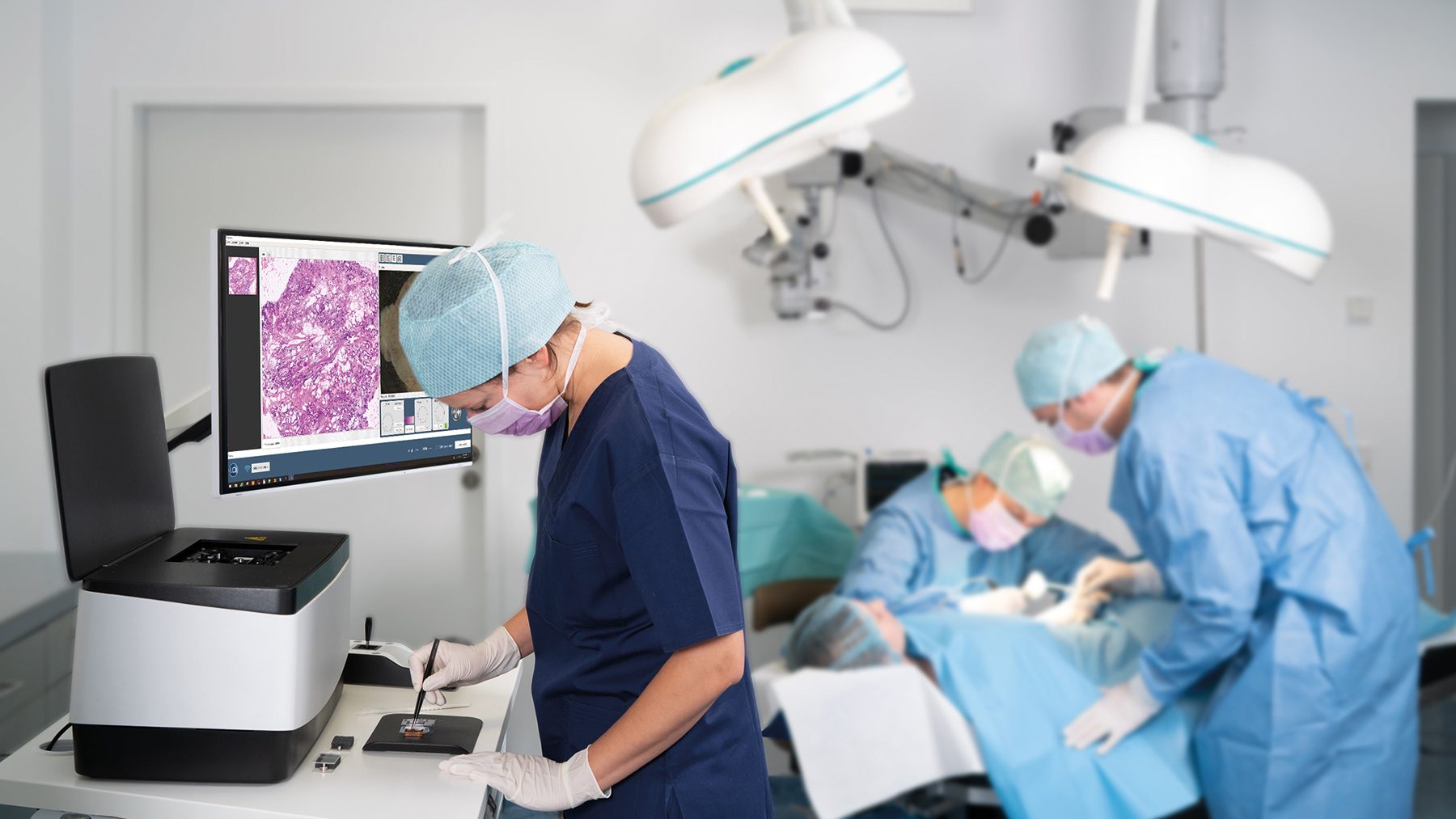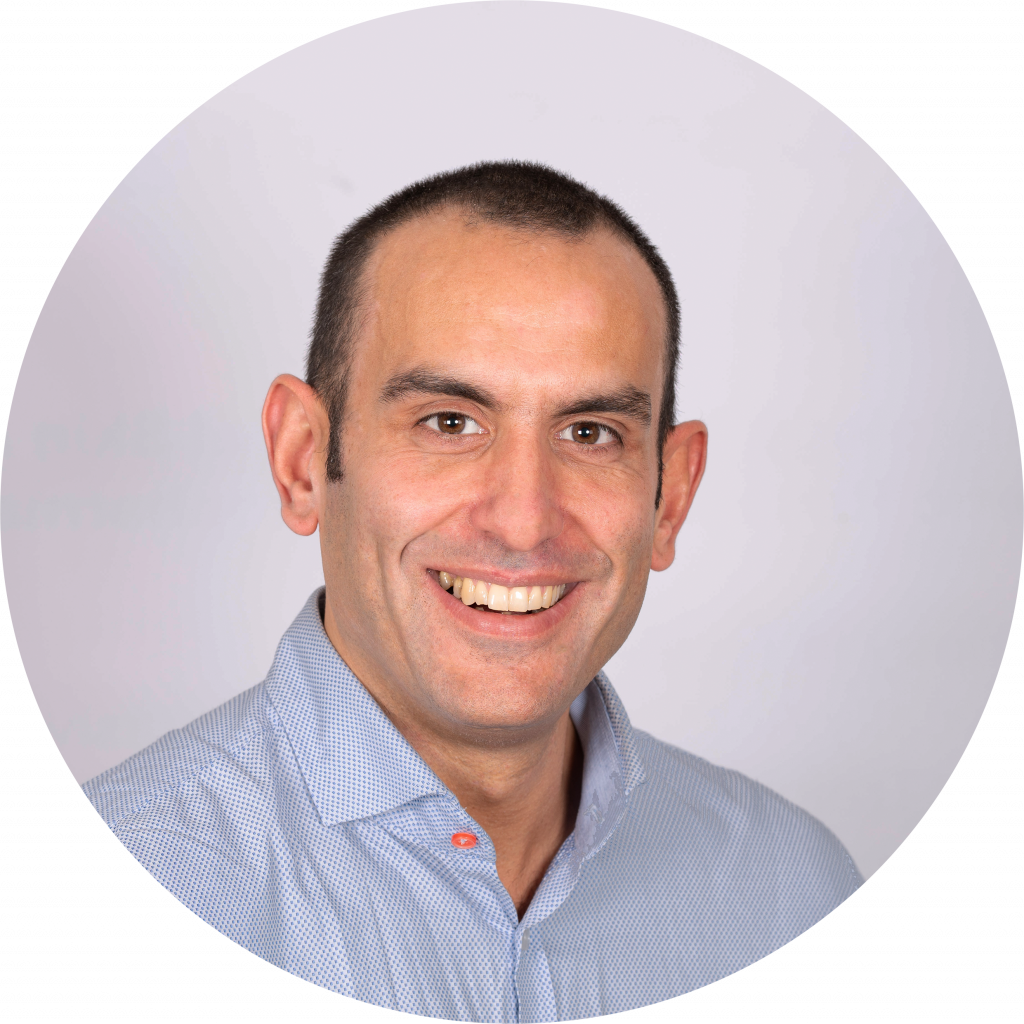Welcome to VivaScope.com
If you are not from the U.S. please visit the international site.
Munich, 26.02.2024 – According to the International Agency for Research on Cancer (IARC), the number of cancer cases is rising worldwide and cancer diagnoses are predicted to increase by 77 per cent to 35 million per year by 2050. The need for more cost-effective treatment methods is more urgent than ever. A pioneering study led by Prof Dr Jan Gutermuth, Head of Dermatology at the University Hospital of Brussels and President-elect of the Royal Belgian Society of Dermatology and Venereology, has presented a revolutionary approach: the integration of the VS2500 ex vivo confocal microscope in the context of micrographically controlled surgery (MMS) for basal cell carcinoma (BCC). “Prof Dr Jan Gutermuth and his team have proven that the average procedure time can be significantly reduced with the use of our technology and 155 percent more Mohs procedures can be performed per surgeon with fewer staff. As a result, patients benefit from shorter waiting times for treatment, leading to faster appointments at clinics, as well as improved care through fewer procedures and minimally invasive procedures. Ultimately, the study shows that the use of the VivaScope 2500 in Mohs surgery reduces costs for clinics by 57 percent,” explains Dr Roberto Banchi, Application Specialist and Head Of Global Application Team at the medical technology company VivaScope.
Optimised intervention time: interventions are significantly shorter
Mohs surgery is considered the most effective technique for treating many basal cell carcinomas (BCCs), one of the most common types of skin cancer. However, it has so far been very costly for clinics. Frozen section techniques are used to assess the margins of incisions during skin cancer surgery. However, this requires considerable manpower and time: after each incision, the tissue must be sent for histopathological analysis, which leads to delays and possibly additional operations. The new study led by Prof. Dr Jan Gutermuth at the University Hospital of Brussels, on the other hand, shows how the freshly removed tissue can be scanned directly during the operation using the VivaScope so that the histology of the cut edges can be visualised and viewed, and the procedure can be continued immediately in just a few minutes. “As well as improving the assessment, we also see an impact on the workflow. Using the VivaScope 2500 has reduced the average procedure time per procedure from 135 to 75 minutes, which is an impressive reduction of 44 per cent,” confirms the head of the study, Prof. Dr Jan Gutermuth.

Use of the Ex Vivo confocal microscope reduces the workload of hospital staff
The use of Ex Vivo VivaScope technology means that fewer staff are required and the capacity cost ratio (CCR) is reduced by half, which reduces the financial burden on the healthcare system. Learning the technology is also quick: “There are established training programmes for the use of our equipment, which are led by experts and enable medical staff to be up and running in a short time,” says Dr Banchi from VivaScope. “A pathologist is used to reading analogue images in the typical two-colour H&E presentation. Thanks to the accuracy of digital imaging with the VivaScope 2500, we were able to show in the study that the discrepancy between the histopathological results and those of the Ex Vivo VivaScope technology fell from 12 to 2 per cent. The more frequently it is used, the faster it works,” explains Prof Dr Jan Gutermuth.
Ex Vivo VivaScope creates efficiency: annual increase in the number of Mohs interventions
Gutermuth’s study clearly shows that the number of procedures performed per full-time surgeon has increased by 155 per cent over the years. However, quality does not suffer in any way, as the use of the VivaScope 2500 shows remarkable key figures, particularly in the detection of BCC residues in the resection margins during MMS. The high reliability rates of sensitivity (96.6%) and specificity (99%) thus underline the effectiveness and efficiency of the method in tumour detection.
Improved patient care with less waiting time
“Prof. Dr Jan Gutermuth’s findings illustrate that innovations not only promote the spread of highly specialised surgical procedures such as Mohs surgery, but also contribute to improving patient care because they can leave the hospital shortly after the EVCM-based procedure,” said Dr Banchi. “With more minimally invasive procedures using VivaScope Ex Vivo technology and fewer procedures and the associated resections and re-incisions, patients benefit from shorter overall waiting times for treatments, which leads to faster appointments in clinics. Overall, care has improved enormously, as we were able to establish in the study,” reports Prof Dr Jan Gutermuth.
Cost reduction for clinics by 57 per cent
However, the use of confocal microscopy with the VivaScope 2500 is not only beneficial for patients, but also for medical facilities and the healthcare system as a whole. The associated increase in efficiency has a direct impact on the use of resources in the healthcare system, as the study shows that personnel and material costs are reduced by a factor of 1.5. This is accompanied by a significant reduction in costs for staff, operating theatres and materials by more than half. “By optimising work processes and reducing the consumption of resources, this technology makes an important contribution to the sustainable development and improvement of patient care,” concludes Dr Banchi.
The full report of the study results can be viewed here.
About VivaScope: VivaScope GmbH is an innovative Munich-based medical technology company and offers a novel solution for high-resolution imaging that is used in various areas of medicine as well as cosmetic and pharmaceutical research. The solution, which is based on confocal microscopy, enables time-efficient differentiation between pathogenic and healthy tissue in real time and on site. VivaScope products are used for medical In Vivo and Ex Vivo applications. VivaScope devices are currently used in 400 clinics and centres across Europe and in over 800 clinics and centres worldwide in a total of 25 countries, including Austria, Germany, Italy, Spain, Portugal, the UK, Morocco, Chile and Australia.
Questions?

Head of Application





